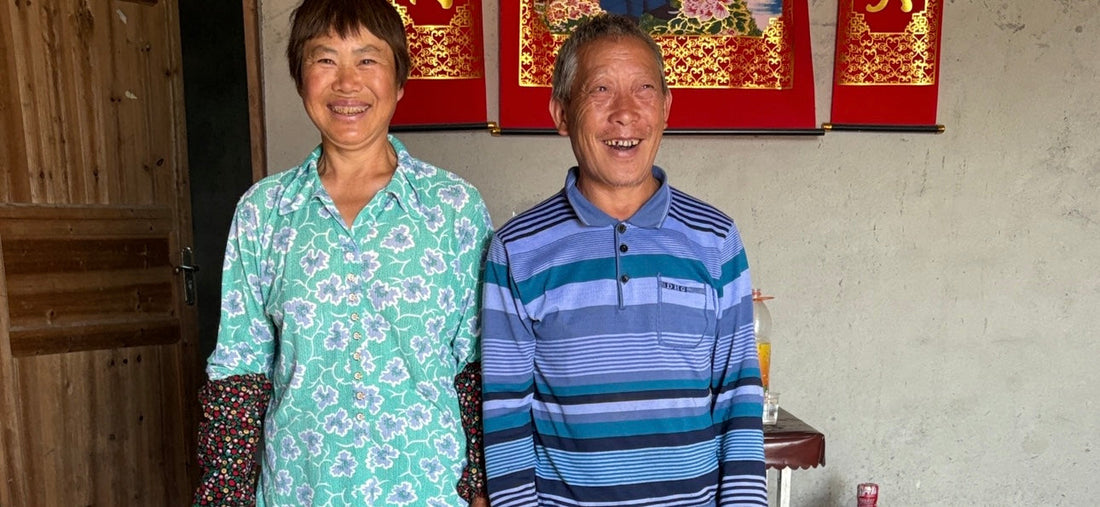
Enshi Wildbrook Village Portrait 6| Songs, Survival, and the Chi Couple
Share
The Chi Couple
C hi is known in the village as a man with three family names. It means he connects people—growing up in one family, living with another, and later carrying the weight of his own children’s home. In a place where ties can scatter, he became the bridge.

Their life has never been easy. When their granddaughter was an infant, she caught polio. Many said she would not survive. Yet through Chi and his wife’s care, she lived. She cannot care for herself or attend school, but in the village she still belongs. She follows her grandparents everywhere, smiling as she watches them, sometimes helping with small tasks like carrying plates or vegetables. One day, I rode their mule, and she ran behind us laughing, her joy filling the path.

Chi’s wife brings another light. She can sing and dance a local performance called lianxiang. In Enshi’s villages, it is almost like the work of medieval bards. At weddings and funerals, dancers perform with improvised verses that carry the hosts’ stories—turning daily life, sorrow, and joy into song and rhythm. Through her voice and movement, the village remembers itself.

When their daughter and son-in-law are away working in the city, it is Chi and his wife who hold the family together. They raise their grandson, care for their disabled granddaughter, and keep the household running.

They may never be called heroes, but in the village they are the quiet pillars—connecting families, protecting the vulnerable, and carrying traditions forward with care and persistence.
